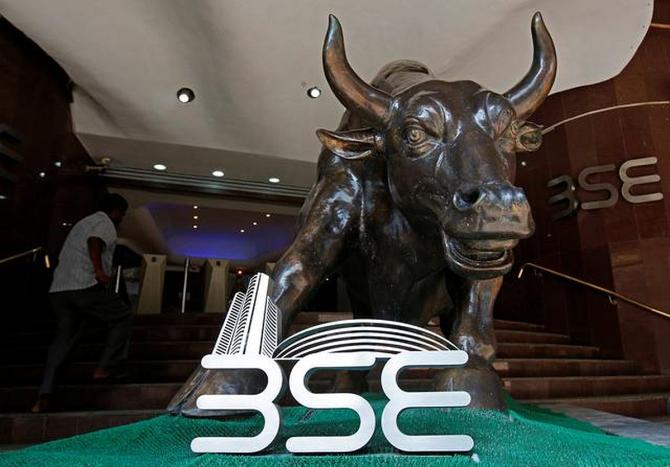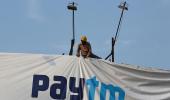The market price action seems to point in this direction.
Let's hope we finally break out.
It is about time! asserts Akash Prakash.

The Indian start-up scene is on fire.
Barely a day goes by without news of another unicorn and new funding rounds. The success of the Zomato IPO is another milestone, opening the door to multiple new listings from the Indian unicorn ecosystem.
Everything seems to be coming together for this subset of the economy. In the first six months of calendar 2021, $10 billion was raised by start-ups and private companies in India.
In July, another $10 billion was raised, led by the mammoth $3.6 billion by Flipkart, the single largest fundraise by a private company in India.
Contrast this with a total of less than $10 billion raised in all of 2020. At this rate, in 2021, we may see almost $40 billion being pumped into the Indian private company universe by global capital.
This trend is further reinforced as even the unicorn IPOs are raising mostly fresh capital (not just secondary sale).
The reality is that all this money is being raised by the start-up/private ecosystem to spend. Money raised will be spent or burnt, such is the nature and the stage of lifecycle of most of these companies.
The money will be spent to hire people, build infrastructure, strengthen the core tech, accelerate demand and build the brand.
None of these companies will just sit on the money raised. Mind you, this money is entirely equity, most of these unicorns do not raise debt.
For perspective, $40 billion is Rs 3 trillion, almost 2 per cent of GDP, that is being effectively pumped into our economy by foreign funds. This may be the stimulus that the government was unable to provide due to a lack of resources.
The stimulus will come from foreign funds, not the central government. Frankly, how does it matter where the money comes from as long as it is spent in our economy and is not debt?
Is the sector overheated?
Will investors make money providing capital at these valuations?
All these issues are debatable, but what is clear is that the money will be spent in India and will boost the economy.
I think the trend is real, secular and just getting started. If we play our cards as a country well, there is no reason this capital flow will not continue, if not further accelerate.
Long-term investors continue to search for structural growth and the next wave of innovation and China has shaken the faith of many.
We must make sure we do not shoot ourselves in the foot and inadvertently take measures to temper this enthusiasm.
First of all, the proposed pricing and valuation of some of the new issuances in this space seem quite rich. It is inevitable that a few issues will fail and investors, including retail, will lose money.
It is critical for our regulatory authorities to hold their nerve at this point. Just because some issues may fail, we cannot shut the door to IPOs by the start-up ecosystem or raise significant hurdles to listing.
Any change in regulatory stance will only make monetisation more difficult or push eligible companies to list overseas, neither of which helps our markets or the economy.
We must also be careful to guard against the perception of a lack of a level playing field. Many global investors are continually worried that domestic lobbies can make the operating and regulatory environment difficult for foreign funded companies.
Hopefully, there will be no discriminatory treatment of such companies. If investors feel the odds are stacked against them, they will not commit money. This perception must be nipped in the bud.
Ultimately, whether this capital is raised locally or from global investors, it is being spent in India, to build and hire locally, that is what we must focus on.
There continues to be a debate among global investors as to India's outlook post the FY22 recovery. The bulls feel we will settle into a long-term growth trajectory of 7 per cent for the economy, while the bears are convinced that the country cannot grow faster than 4-5 per cent. Market price action seems to support the bullish view.
I am also slowly coming around to the more bullish view. I base this on three factors.
First, all the money being raised by the start-up ecosystem is supercharging growth. Demand for skilled engineering talent has gone through the roof. Combine this with a strong growth outlook for the IT service players and we are throwing fuel on the fire.
The IT/tech industry will be back to peak hiring levels, last seen a decade ago. Attrition has rocketed (Cognizant just reported attrition of 31 per cent) and salary hikes are accelerating.
This will be a significant economic growth multiplier, for consumption, housing and commercial real estate. This growth multiplier has been absent for most of the last five years, as both IT hiring and wages were subdued and we have forgotten its impact.
There is a clear trend of higher value added manufacturing relocating to India. Be it the PLI schemes, the China+1 strategy adopted by most MNCs or structural industry change, the trend is noticeable particularly in speciality chemicals, API, precision manufacturing in automotive and light engineering and textiles.
The anecdotal feedback is clear. Global demand is very strong and secular. Buyers want long-term contracts. Companies are investing. Exports will accelerate, after almost five years of no growth.
There is a clear reversal in the real estate sector. Housing demand is strong and pricing is improving. It is only a matter of time before new construction begins to pick-up. This sector has been in serious stress for almost five years now.
A recovery here will be a big multiplier, as it creates low skill jobs and pulls in demand for cement/steel and helps clean up the non-performing asset mess.
The private sector capex cycle is also more visible. It will be driven this time by steel, cement, roads, renewables and manufacturing, not thermal power. Anecdotal evidence is again clear, just hear the earnings calls.
Some of these trends are still early and worth watching to see how they develop. There remain structural weaknesses in the financial system and immense pain among small scale enterprises.
However, the stars seem to be aligning. It is possible that we could be finally entering a period of sustained 7 per cent-plus economic growth.
Hopefully, this is not wishful thinking. The market price action seems to point in this direction. I am getting more convinced.
Let's hope we finally break out. It is about time!
Akash Prakash is with Amansa Capital.











